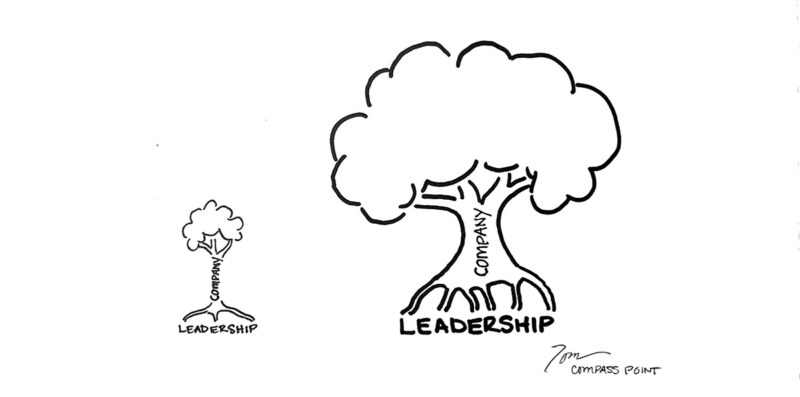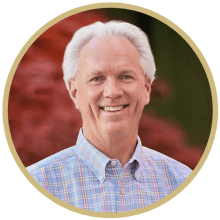LEADERSHIP
Leadership Is Not What You Think
 This article is part of the” 20-Year Look Back” series by Tom Garrity, founder, and managing partner of Compass Point Consulting, as he shares insights and reflections on two decades of supporting family business owners.
This article is part of the” 20-Year Look Back” series by Tom Garrity, founder, and managing partner of Compass Point Consulting, as he shares insights and reflections on two decades of supporting family business owners.
Twenty years ago, leadership was a term used mostly in military history lessons and boardroom meetings. Today it’s a whole industry with books, courses, and certifications.
In fact, when I first started Compass Point, leadership was an ancillary topic. My work focused on the systems, financials, hiring the right people, and being a confidant to the owner. At the time I didn’t see it as leadership coaching, but rather as building a relationship with a client who trusted me enough to let me see the inner workings of their mind and business. I helped the person as I helped the business.
A company cannot outgrow its leadership.
Then over time, I began to see a pattern. CEOs and key executives were asking for guidance on how to lead better, be better and inspire the people around them, not just manage them. If leadership doesn’t grow, neither can the company. This recurring request solidified the need for leadership as one of the Six Pillars of Your Family Business Framework we implement with clients today.
I often see people promoted to a position that requires leadership coupled with an assumption that they know how to lead. No matter how prepared, the reality is we all hit a leadership plateau at some point. Leadership is no longer blind loyalty or “doing things the way we have always done them”. It requires us to expand our capacity to learn, reflect and empathize. It is a lifelong journey of growth.
Leadership is listening.
Most people think of leaders as direct, decisive, and definitive. Yet, the greatest quality a leader can possess is the ability to lean in and listen – really listen. It means letting go of ego and hearing feedback that challenges us and the status quo. A leader will never keep the respect of the team if they feel they can’t speak up AND be heard.
Leadership is accessibility.
Long gone are the corner offices and chain-of-command mindsets. I truly believe that family businesses were the groundbreakers for this shift. A family business owner will tell you that there is no time for titles and hierarchies when there is a crisis or deadline looming. Access to your beliefs allows your workforce to connect to the “why” that drives the “what” and “how” of the company.
Leadership is boundaries.
While this seems to go against the point above, think of it as the yin and yang of leadership. While accessibility creates connections, setting boundaries creates expectations. Boundaries are limits that create clarity. Boundaries in family business take the form of core values. These statements let everyone know what is acceptable and what it is not. As a leader, you are not only responsible for upholding them but for living them as well.
Leadership is failure.
The objective is not to avoid failure, but to learn from it. Failure will happen and leaders understand that. The truest test of the leader is how they navigate the team through it, how they extract the lessons, and help the team come out stronger and smarter on the other side.
Leadership is humble.
A leader puts their company and team ahead of their own ego. They acknowledge their mistakes and can give credit where credit is due. Humbleness breeds trust, an essential element to resilient relationships both within the team and the family.
What I’ve come to realize is successful leadership isn’t measured by sales revenue, profit margins, or market share. Do these financial markers matter? Of course, they do but they are simply data points in time – not the true legacy of leadership. The true litmus test will be in the hearts of your team and family.
Simon Sinek in his hallmark Ted Talk said, “… if you hire people just because they can do a job, they’ll work for your money, but if you hire people who believe what you believe, they’ll work for you with blood and sweat and tears.”
People are THE metric of great leadership.
If we get this right, not only will the business have strong financials, but it will also have the culture to create a legacy.
And that starts with you.
You may also like…

BLOG | FAMILY DYNAMICS / GOVERNANCE
The 4-Letter Word Owners Can’t Afford NOT to Talk About: EXIT
I’ve had my share of family business owners who avoid discussing this four-letter word to the point of pure denial, quickly ending the conversation when this word bubbles up. The word? E-X-I-T. It sounds so final. The brutal truth is that 100% of owners exit the business, yet only 50% – just 1 out of 2 owners – will do it on their terms...
Read More
BLOG | LEADERSHIP
Family Business Peer Groups are Gamechangers for the Next Gen
Many family-led companies hire business consultants to grow the business. Some even send their emerging leaders to personal development programs. But there is a gap – and it’s a BIG one.
Read More
BLOG | PEOPLE / TALENT
Unlocking the Golden 5% in Your Employees
The Golden 5% is the full expression of our ability, multiplied by our maximum possible effort, multiplied by our full contribution of heart. It is the performance equivalent of what we offer in a deeply loving relationship – the absolute best of ourselves. And yet, we rarely give it or reliably inspire the giving of it by others in organizations. Why?
Read MoreWhere Family Businesses Come to Grow & Learn
At Compass Point, we make it easy to get insights, training, tools, and articles straight to your inbox and help family business owners and their team continue to grow, learn, and lead.


